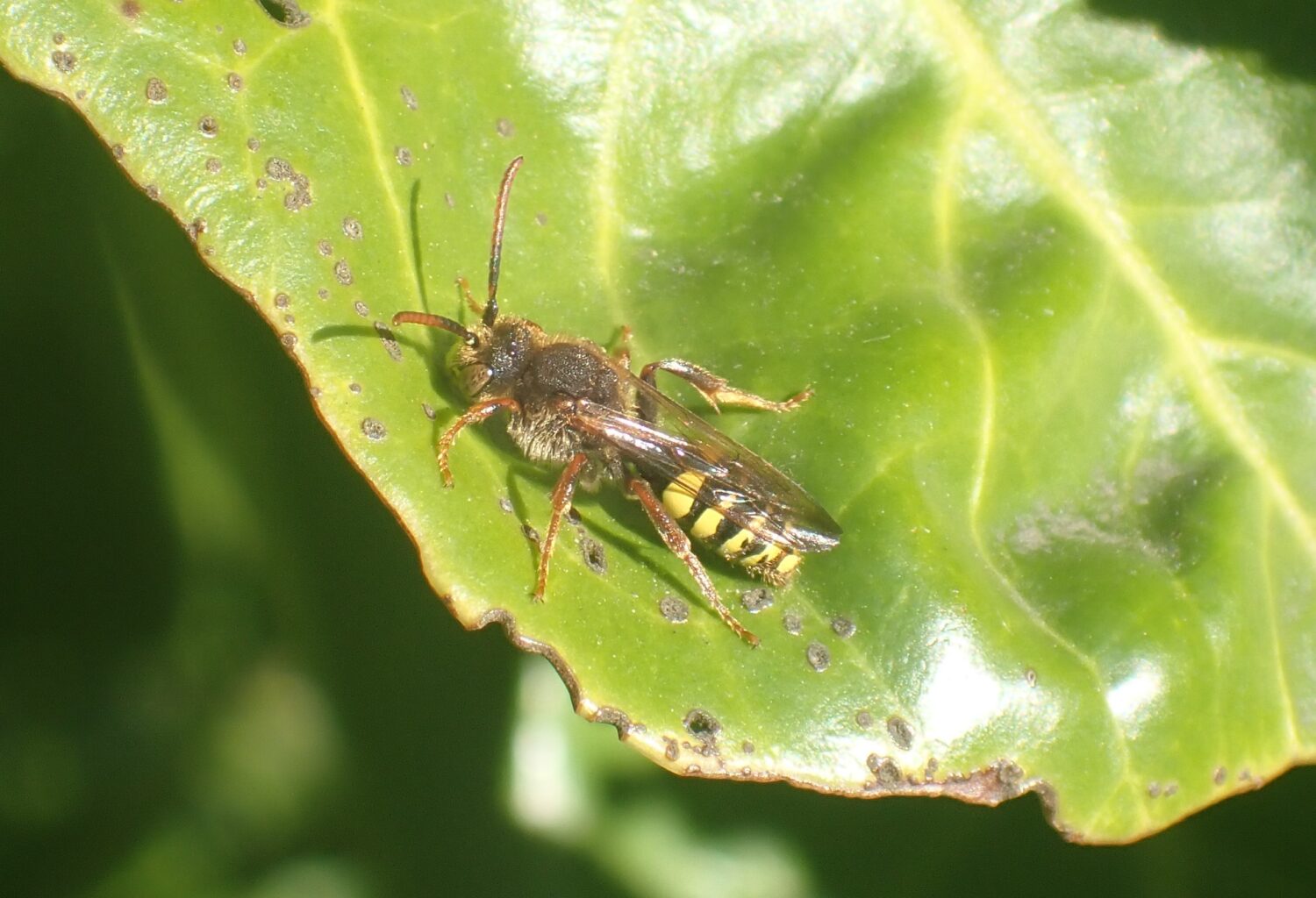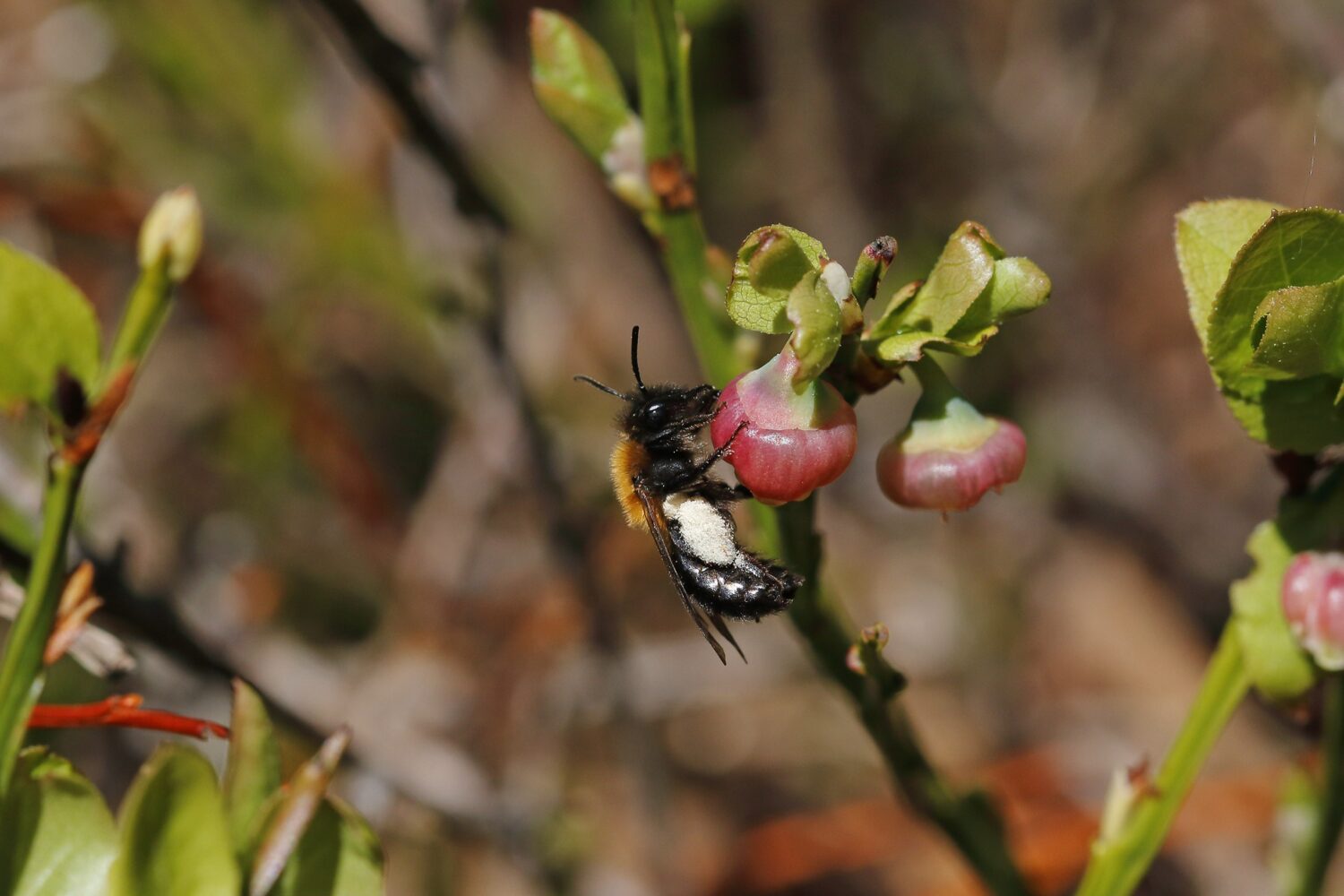NHSN Conservation Officer, Charlotte Rankin, introduces the nomad bees – a group of wasp-like bees that survive by exploiting the hard work of other solitary bees.
Nomad Bees are no ordinary bees. These bees are wasp-like in appearance, do not collect pollen and are virtually hairless. Their name ‘Nomada’ gives a clue as to how these bees live. ‘Nomada’ is derived from the Greek word meaning ‘roaming’ or ‘wandering’. All Nomad Bees are cleptoparasites or ‘cuckoo bees’ that lay eggs in the nest of other bee species.
Nomad Bees belong to the largest group of cuckoo bees with over 850 species worldwide. In the North East, around 12 species of Nomad Bee have been recorded but there are likely more to be discovered. Nomad Bees typically lay eggs in the nests of Mining Bees (from the genus Andrena). Some species attack a range of Mining Bees while others attack a specific species.
Females detect a nest by scent and visual cues, and wait until the nest is unoccupied. She then enters the nest burrow and lays an egg in an unsealed nest cell. When it hatches, the larva kills the host bee egg or grub. It then proceeds to feed on the nectar and pollen food store. In the following year, the Nomad Bee will emerge as an adult and the process repeats.
Nomad Bees are most likely to be found around the nest sites of their host species or on flowers nearby. You will often find them flying low over the ground in search of a nest to sneak into. As Nomad Bees do not collect pollen, these bees are virtually hairless and have no special pollen-collecting hairs.
This is of course quite a gruesome lifestyle! This association has in fact occurred for many millennia. The presence of cuckoo bees is a sign of a good population of host species. In spring you are likely to encounter two Nomad Bee species: the Gooden’s Nomad Bee and Marsham’s Nomad Bee. Both exploit the hard work of spring-flying Mining Bees.

Gooden’s Nomad Bee Nomada goodeniana
Gooden’s Nomad Bee is a yellow and black bee. Looking at the yellow bands and spots can help to identify this species.
There are complete yellow bands across the abdomen, but the first band is often broken.
A bold yellow spot can be found at the base of each wing. A pair of yellow spots is also present at the bottom of the thorax. In males, these spots are often reduced or completely absent.
The antennae and legs are orange. Males also have black markings on the antennae.
This bee typically flies from April to June. It lays eggs in the nests of the Buffish Mining Bee (Andrena nigroaenea) and possibly Chocolate Mining Bee (Andrena scotica).

Marsham’s Nomad Bee Nomada marshamella
Looking at the yellow bands and spots also helps to identify this Nomad Bee.
At the base of each wing is an orange, rather than yellow, spot. This helps to separate this nomad from the above Gooden’s Nomad Bee.
There are yellow bands across the abdomen, but the first and second band are broken.
The legs are largely orange. The antennae are also orange but males have additional black markings on the antennae.
This bee typically flies from April to June. It lays eggs in the nests of the Chocolate Mining Bee (Andrena scotica).

Join the North East Bee Hunt
Urban or rural, beginner or expert, we need your help to record eight distinctive bees across the North East this spring and summer.
Your records can add to our understanding of bees in the region and inform conservation and monitoring efforts.
Taking part is easy and every record counts, wherever you live in the region. Records of all bee species are encouraged.